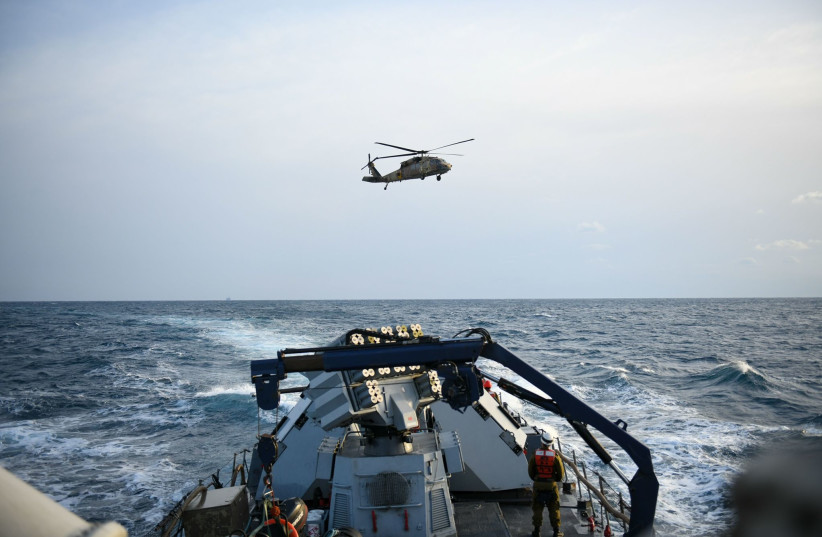An important drill took place this week between the IDF and the US military. The aerial exercises included advanced F-35 warplanes and American F-15s, with drills taking place over Israel and the Mediterranean Sea simulating an operational scenario and long-distance flights.
This is of the utmost importance, and it is hoped that preparations like this and public knowledge that the drills took place will help deter Iran and send a message to Tehran and other adversaries of Jerusalem that Israel is well prepared for any kind of threat – conventional and nuclear.
The joint training brings together key warplanes and pilots from the US and Israel and showcases how the countries are working together in the region and how they have created interoperability to jointly counter threats.
Now that Israel is a part of Central Command’s area of operations, these kinds of joint drills have added meaning and benefit to both sides. The drills come during the same week that Israel tested a long-range Barak missile interceptor aboard one of its advanced Sa’ar 6 corvettes off the coast.
This was a first-of-its-kind test and included a successful interception of a simulated cruise missile. The installation of the Barak missile system on the new corvettes is meant to complement the naval version of the Iron Dome installed on them. This creates a multi-layered defense umbrella off the coast that can protect the mainland as well as sea-based platforms, like oil fields and rigs.

Meanwhile, in the skies, the Israelis F-35s and F-16s worked with US F-15s and a US KC-135 refueler on various types of operational scen
arios. The IDF said this included an “extensive simulation that replicated a campaign against distant countries. This exercise tested the IDF’s abilities at gathering intelligence, researching and ‘outlining’ targets and making intelligence available to the operational forces.”
The training should be understood as part of a much larger series of cooperative events that have taken place between the US and Israel in recent years.
In addition, Israel has been conducting other joint drills, such as with Greece and other countries. There is a lot more work to be done, and two years after the Abraham Accords there are expectations that the cooperation with the United Arab Emirates and Bahrain regarding stability and security in the region will continue to grow. Towards that end, meetings like the Negev Summit forum are important, as is the cooperation between India, Israel, the US and UAE; a group called the I2U2.
When it comes to the Iranian threat it is clear the Islamic Republic continues to pose a threat via Syria and also in the Gulf of Oman. In Syria, pro-Iranian proxies have continued to target US forces in the east.
In addition, Iran targeted a ship in the Gulf of Oman in November, using a drone flown from Chabahar, an Iranian city on the coast of the Gulf.
Iranian drone, missile threats growing
The drone and missile threat is growing, and defending against those threats is a key priority. It is important that IDF Chief of Staff Lt.-Gen. Aviv Kohavi made a trip to the US and met with Chairman of the Joint Chiefs Gen. Mark Milley last month. During that meeting, the military leaders discussed regional threats, including from Iran.
Kohavi recently said Israel had prevented the creation of a “Hezbollah 2” in Syria, indicating the IDF campaign there involving covert airstrikes has been successful at preventing more entrenchment by Iran and its proxies in Syria.
With Iran continuing to enrich uranium and not afraid to use drones and missiles across the region, the need to deter Tehran is more important than ever. Such action worked in the past. In 2003, Iran suspended its nuclear program when the US invaded Iraq out of fear that it would be next. That shows that when presented with a real threat, the ayatollahs may recalculate.
The training this week illustrates how essential the partnership with the US has been for Israel and the region. While that partnership will continue to grow and bloom, it is essential that the incoming government pay close attention to the US and also concerns that the US may be raised about security issues in the region.
The IDF is at the forefront of keeping Israel stable and safe, which includes securing areas outside its borders. Keeping adversaries deterred and wars from breaking out will continue to be essential in the years to come.
